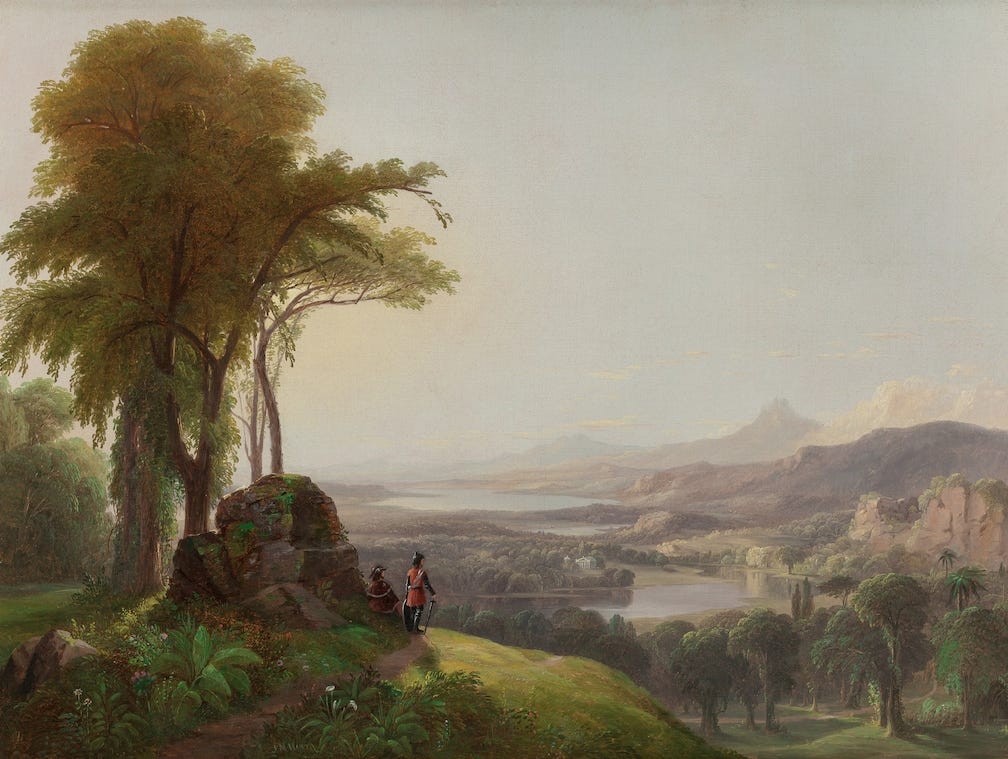A New Reason to Embrace the "Old World / New World" Explanation of Wine
There is a useful and fixed definition of these terms we need to understand
The “New World” / Old World formulation within the wine universe has come in for much criticism of late with many suggesting the formulation is outdated, exclusionary, unnecessary, and too oriented toward centering the West. But one historian has hit upon what I think is a precise and useful understanding of the phrasing, but not everyone will like it.
First, let’s dispel the sometimes utilized definitions of OW/NW that get bandied about. For some time, and among some still, the terms Old World / New World are used to identify styles or characteristics of wine. New World Wines are bigger, flashier, sweeter, more alcoholic. Old World wines are more austere, more balanced, possess less alcohol, more structured.
I don’t know if this was ever true, but it isn’t today. I’m not opposed to painting with a broad brush on occasion. But this understanding of the two worlds seems like it is painting by simply splashing a can of paint on a canvas and spreading it with a bulldozer. Technology, ambition, more detailed understandings of terroirs, and global markets have led winemakers everywhere to pursue such a broad range of wine styles that it is nearly useless to try to assign a style to a continent or country, or even region.
Something better has arrived.
In the first chapter of Jennifer Regan-Lefebvre’s new and really fascinating book, “Imperial Wine: How the British Empire Made Wine’s New World”, she advances an important explanation of the Old World / New World dichotomy. For “Old World, Regan Lefebvre suggests the definition is primarily geographical and historical:
“The Old World” generally refers to wine-maing countries of western continental Europe, which have been consistently producing wine for thousands of years. The major wine-producing and exporting countries of Euorpe—France, Italy, Spain, Portugal and Germany—are indisputably Old World.”
I don’t think there is any reason to argue with this definition of Old World. In fact, the author, with whom I agree on this further point, notes that while Greece and Georgia are both old and European, they have not been anywhere near major exporters of wine for centuries. So, they don’t get thrown into the “Old World” Category.
But it is Regan-Lefebvre’s thoughts on what defines “New World” that gets interesting. In the first place, she settles on the United States, South Africa, Australia, New Zealand, Argentina and Chile as encompassing the New World of wine. Uncontroversial is this. It’s her next explanation that is important:
“There is one vital feature that unites all of the New World producers: They did not emerge to compete with Europe, they were created by Europe. Australia, South Africa, New Zealand, Chile, Argentina and he Unied states were all established as European settler colonies. They also all began producing wine almost immediatly. The New World of wine should therefore be understood as historically fixed: rather than shorthand for particular production models (or styles of wine), it refers to those wine-producing countries that were established between 1500 and 1850 as a project of European imperialism.”
This is an important insight. It provides a static definition for “New World” that can be usefully deployed in discussions of wine and in academic forums and forgoes the messy and ultimately fruitless attempt to define the Worlds by styles, production methods, or ideology.
Even more intereting and insightful is Regan-Lefebvre’s contention that the institution of winemaking in these settler colonies were attempts to “replicate institutinal structures that existed in the home countries.” This turns out to be not just a replication of commerical institutions but cultural also.
One mention of “settler colonialism” these days is bound to be interpreted as negative, even evil. While colonialism and imperialism by European powers both imposed significant and morally repugnant institutions on indigenous cultures and people, I think it is fair to say that the winemaking heritage in the New World countries can be counted as a position that need not be reckoned with by imposing judgmental conclusions and finger wagging upon the current industries.
The whole of Regan-Lefebvre’s "Imperial Wine” is an in depth exploration of the British Empire’s impact on wine production in South Africa (where it took over from the Dutch), Australia and New Zealand. Academic in nature, it is very accessible to the average reader who has any interest at all in the history of wine.
Most important, however, is I think the author has contributed an original idea or at least fully fleshed out an idea concerning the significance and utility of the “Old World” / “New World” structure that has for so long now played a key role in discussions of wine history and the world wine marketplace.


